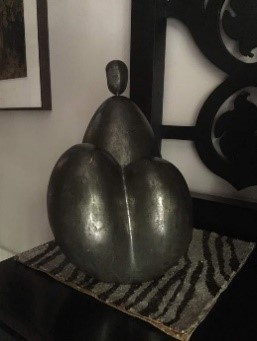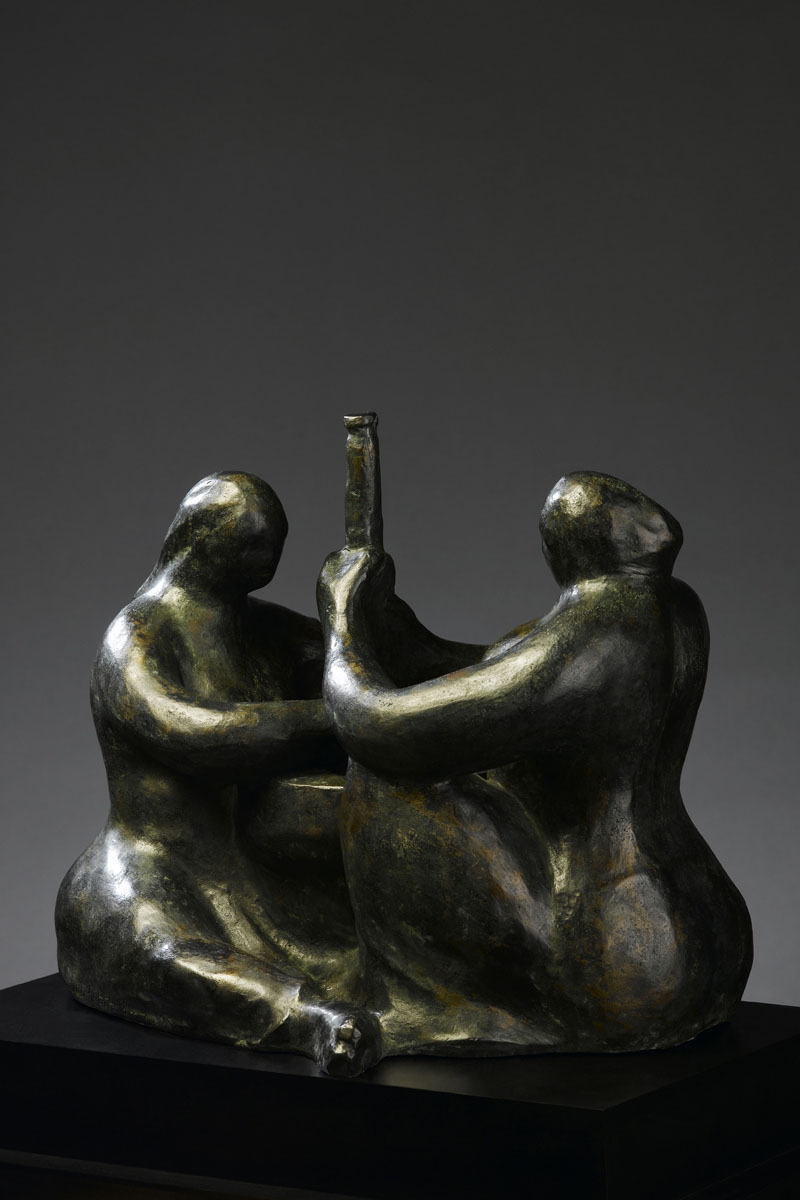Prodosh Dasgupta was a crucial figure of that mid-20th
His legacy has influenced generations of sculptors and his trademark style continues to hold high significance for art historians, connoisseurs,

Prodosh Dasgupta was born at Barakar in Dhaka. He graduated from Calcutta University in 1932 and then studied sculpture at Lucknow School of Art and Crafts the same year. Then, from 1933 to 1937, he trained under Devi Prasad Roy Chowdhury at the Government School of Art and Craft, Chennai, and earned his diploma in sculpture from that institution. He was awarded a fellowship from Calcutta University that paid for his travel to the Royal Academy of Arts in London and Academie de la Grande Chaumiere, Paris to hone his sculptural and bronze casting skills, from 1937 to 1939.
At this juncture, in 1943, Das Gupta’s contemporaries Rathin Maitra and Subho Tagore, both artists, formed the Calcutta Group — and Prodosh Das Gupta, Gopal Ghosh, Nirode Mazumdar, Paritosh Sen, Prankrishna Pal, and Kamala Das Gupta joined as founder members. The guiding motto of the Group was best conveyed in its slogan: “Art should be international and inter-dependent”. The Manifesto went on to say that “our art cannot progress or develop if we always look back to our past glories and cling to our old tradition at all cost. The vast new world of art, rich and infinitely varied, created by Masters the world over in all ages, beckons us.” The human condition was another concern of the members, so the manifesto also said that “The Gods and Goddesses are being pulled down from their lofty pedestals and MAN has been enthroned in their place.”
It was in the backdrop of Bengal’s calamitous famine and its horrors of starvation and death that racked the countryside and the city that the Calcutta Group came together to search for a new language of artistic expression that would reflect the crisis and anguish of the times. The agenda of the group was to liberate artists from the conventional formal methods taught in the art institutions and push them to bring their art into direct dialogue with the stark social realities around them. The Calcutta Group was one of the first modern artists’ collectives in the country that set an exemplary stage for the making of

Prodosh Dasgupta’s sculptures are therefore reminiscent of a time when modern Indian art was radically breaking free of its earlier colonial and nationalist antecedents and evolving its own free will and internationalist credentials. Art critic Keshav Mallik noted, “Prodosh Dasgupta had
Prodosh Dasgupta was appointed the curator of the nation’s new National Gallery of Modern Art (NGMA) in 1957. During his tenure of thirteen years at the NGMA, he purchased a large body of works by M.F. Husain, F.N. Souza, Tyeb Mehta, Ram Kumar, and A. Ramachandran that would make up the early core of the museum’s permanent collection, and helped to build it up as the most regarded repository of modern Indian art. In 1955, he was made a Fellow of the Royal Society of Arts in London. He was also conferred Fellow of the Lalit Kala Akademi in New Delhi in 1982 and also
Items in Auction
Egg Bride
Reference:
Prodosh Dasgupta, "The Calcutta Group: Its Aims and Achievements," Lalita Kala Contemporary 31. New Delhi, April 1981
Soumitra Das. “A Fine Balance” The Telegraph. July 29, 2012
Christies Auction Catalogue. “South Asian Modern + Contemporary Art.” June
“Clay Clan: Late Sculptors Pradosh Dasgupta and Sarbari Roy Choudhury Remembered through a Show.” Blouin Artinfo. April 3, 2012.
Prasanta Daw. “A Concise Chronicle of Bengal’s Modern Sculpture.” Art Etc – News & Views. December 2010, Calcutta
Romain Maitra. "Man Enthroned". Business Standard. Jan 25, 2013